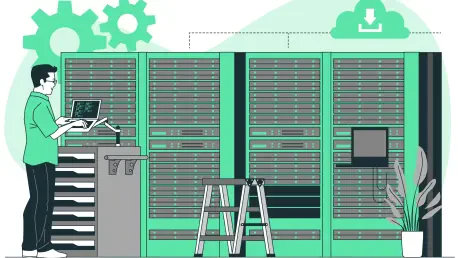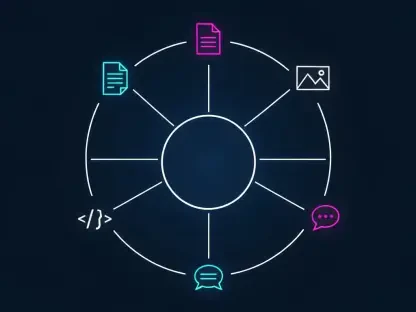As businesses continue to evolve, it has become increasingly important to ensure that IT infrastructure can handle the demands of the digital age. The shift from traditional on-premise data centers toward hybrid and multi-cloud environments has become a necessity for many organizations. This transition offers strategic workload distribution but brings about new challenges, including the complexity of AI-driven automation, edge computing, and sustainable operations. To remain competitive, businesses must address the scalability of their technology while ensuring robust security and compliance measures against sophisticated cyber threats.
Challenges of Scalability and Complexity
Transitioning from Traditional Infrastructures
The transformation from conventional on-premise data centers to modern hybrid and multi-cloud platforms marks a significant step for organizations aiming to improve operational efficiency and scalability. These systems provide the flexibility to distribute workloads strategically, but organizations often face hurdles with integration. The compatibility between legacy systems and advanced cloud applications becomes crucial for maintaining smooth operations. This complexity can lead to integration challenges, ultimately affecting digital transformation if not managed effectively. Furthermore, the rapid advancement of infrastructure technologies demands specialized expertise, creating a gap in skills needed for maintaining cloud architectures, AI-driven systems, and cybersecurity measures.
Navigating Cost Management
A significant concern that businesses must navigate in today’s landscape is the growing expenditure associated with cloud services, maintenance, and energy consumption. As the adoption of multi-cloud environments expands, effective cost management becomes essential. Without proper visibility and control over resource allocation, inefficiencies and budgetary pressures can arise. Companies need to employ solid practices, such as implementing Financial Operations (FinOps) principles, to ensure their cloud spending aligns with business objectives. Utilizing AI-powered tools can aid in optimizing costs and workloads, helping businesses maintain a balance between technological advancements and economic sustainability.
Security and Compliance Essentials
Adapting Security Frameworks
In an era dominated by digital transformation, the importance of security and compliance measures cannot be overstated. Organizations are increasingly exposed to sophisticated cyber threats that necessitate robust security frameworks to protect data and ensure business continuity. Employing zero-trust architectures and automated security tools can greatly enhance risk management and compliance efforts. This approach focuses on verifying each access request, regardless of its origin, and requires implementing stringent controls to mitigate potential vulnerabilities. Continuous monitoring and agile response strategies are essential for dealing with a rapidly changing digital landscape where threats evolve swiftly.
Regulatory Compliance and Risk Management
Compliance with regulatory standards is a major aspect of maintaining a secure infrastructure. With evolving regulations, businesses must keep up to date with requirements pertinent to their industry and region. Ensuring regulatory compliance not only avoids potential legal repercussions but also builds trust among consumers and stakeholders. Companies can benefit from incorporating automated compliance checks alongside regular audits to identify and rectify non-compliance issues promptly. Investing in risk management strategies further supports this effort, offering a proactive approach to identifying and mitigating risks associated with data breaches, operational disruptions, and other potential threats.
Talent and Strategic Partnerships
Investing in IT Talent
The digital age demands a skilled workforce proficient in emerging technologies to drive innovation and operational excellence. Continuous training and development programs are essential for cultivating a pool of IT professionals adept at handling increasingly complex infrastructure demands. As technologies such as AI, cloud computing, and edge analytics continue to evolve, the need for skilled personnel in these areas grows correspondingly. Facilitating an environment that fosters ongoing learning and development allows businesses to stay ahead of technological advancements, ensuring they have the necessary expertise to implement and manage cutting-edge solutions.
Collaborating with Managed Service Providers
For specialized needs that exceed internal capabilities, collaborating with managed service providers (MSPs) can offer a practical solution. MSPs provide valuable expertise and resources that help fill skill gaps, ensuring operational stability and efficiency. By leveraging the knowledge and experience of these external partners, organizations can focus on their core business objectives while maintaining a robust and resilient IT infrastructure. Strategic partnerships allow for the incorporation of best practices and creative solutions into IT management, enabling organizations to navigate challenges and opportunities in the digital age effectively.
Future Trends and Considerations
Emerging Technologies in Infrastructure
The pace of technological innovation continues to escalate, introducing new paradigms such as edge computing and AI-enhanced analytics. These advancements are transforming approaches to data center operations, enabling faster processing and real-time insights. Organizations that embrace these technologies can drive substantial improvements in efficiency and decision-making. Furthermore, sustainability efforts are gaining traction, as businesses recognize the importance of eco-friendly practices in their IT operations. Investing in sustainable solutions contributes to reduced energy consumption and environmental impact, aligning business practices with global efforts toward sustainability.
Strategic Adaptation and Growth
As the business landscape continues to transform, it’s increasingly vital for companies to ensure their IT infrastructure can handle the digital era’s demands. Transitioning from traditional on-premise data centers to hybrid and multi-cloud setups is no longer optional but a strategic necessity for many organizations. This move facilitates efficient workload distribution but also introduces new hurdles, such as the intricacies of AI-driven automation, edge computing, and sustainable operations. To stay ahead in the competitive market, businesses must focus on scaling their technology effectively while also implementing strong security and compliance protocols. With the rising sophistication of cyber threats, it’s crucial to maintain robust defenses. Moreover, integrating technological advancements like edge computing and leveraging AI can offer significant benefits, but these come with their own set of challenges. Organizations must navigate these complex landscapes to ensure they meet operational needs and sustainability goals in a digital-first world.









